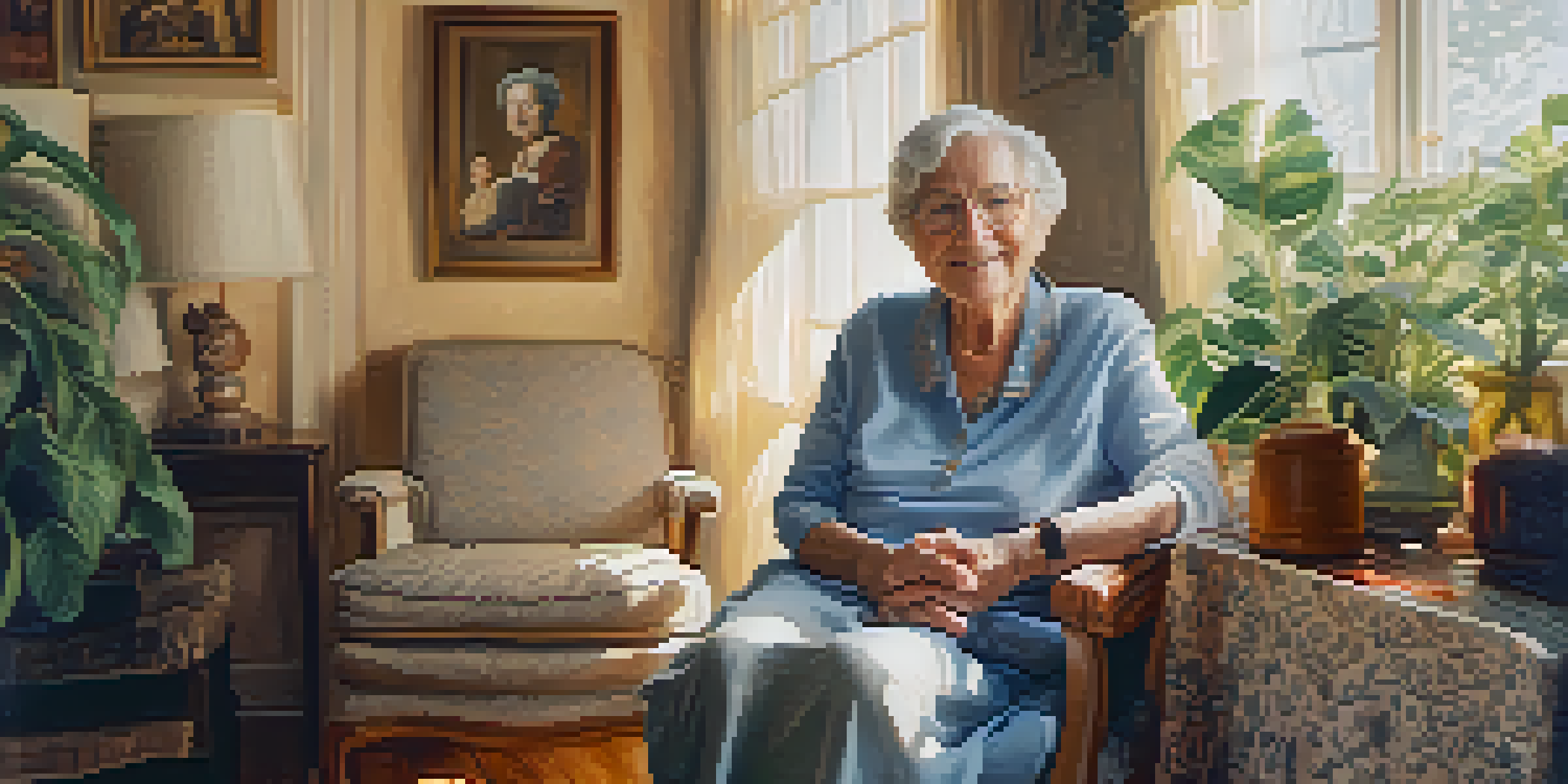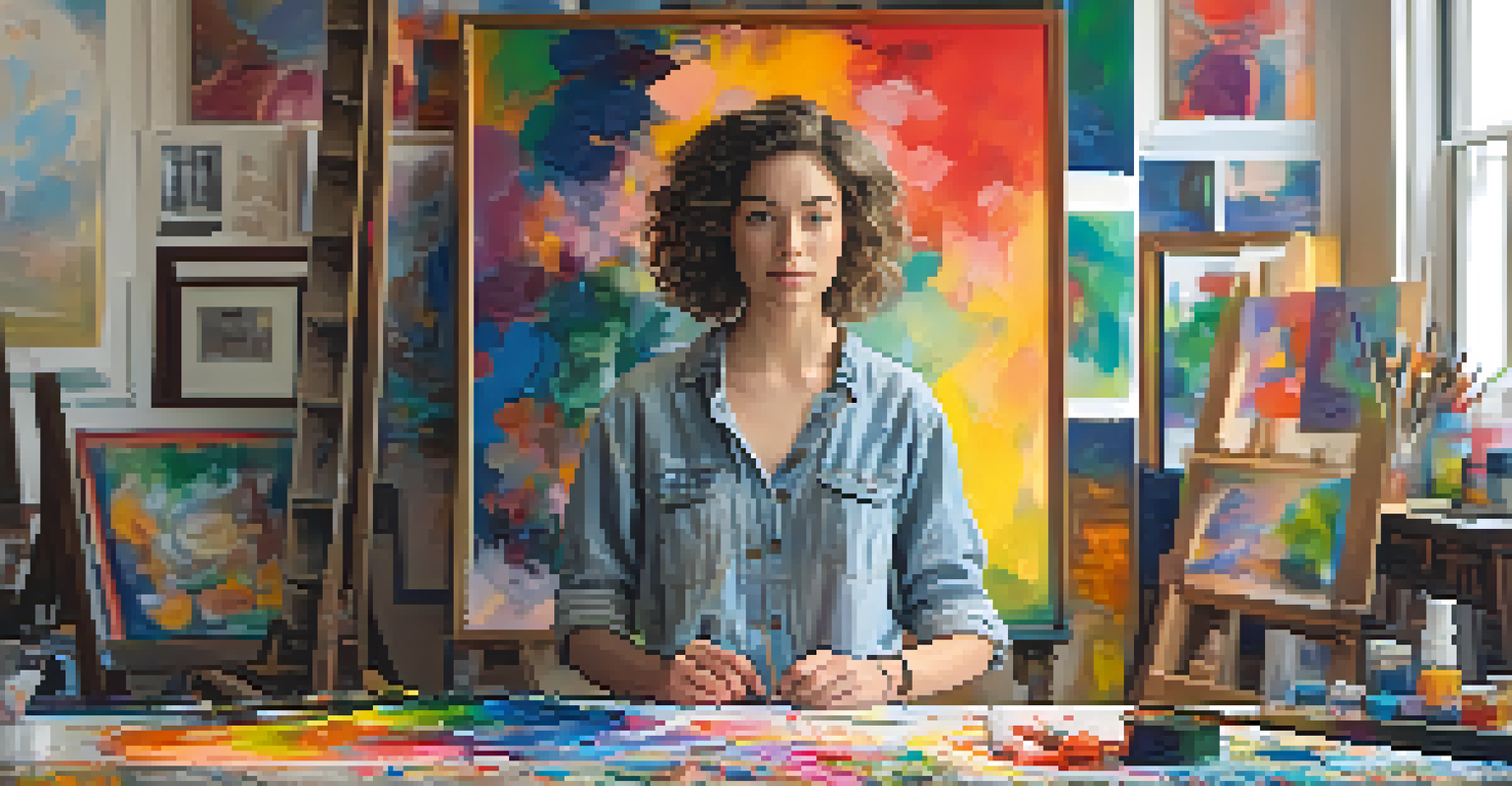Personal Memory and Identity: The Influence of Portrait Painting

The Connection Between Portraits and Personal Identity
Portrait painting serves as a visual representation of an individual's identity, capturing not just physical traits but also personality and emotional depth. Each brushstroke can evoke memories and feelings that help define who we are. Think of a portrait as a window into the soul, reflecting the complexities of our personal narratives.
A portrait is not made in the camera but on either side of it.
When we look at a portrait, we're not just seeing a face; we're engaging with a story. For instance, a family portrait can evoke nostalgia, reminding us of our roots and the relationships that shape us. In this way, portraits become artifacts of our identity, connecting us to our past and influencing how we perceive ourselves.
Moreover, the way a portrait is painted—its style, colors, and composition—can also influence how we see ourselves and our identity. An artist's interpretation can highlight certain features or emotions, prompting us to reflect on our self-image and how it aligns with societal expectations.
The Role of Memory in Shaping Portraits
Memory plays a crucial role in both creating and interpreting portraits. Artists often draw from their memories to convey emotions and experiences, allowing the viewer to connect on a deeper level. This connection can be as simple as recognizing a familiar expression or as profound as recalling a significant moment in our own lives.

For example, the memories we associate with a loved one can transform our perception of their portrait. A painting of a grandmother might remind us of her warm hugs or stories, making the portrait a vessel for our cherished memories. This interplay between memory and portraiture allows individuals to relive experiences every time they engage with the artwork.
Portraits Reflect Personal Identity
Portraits capture not only physical traits but also the emotional and narrative complexities that define who we are.
Additionally, the act of painting itself can be a form of memory-making. When an artist captures a moment or a person, they create a lasting impression that can evoke emotions long after the moment has passed. This dynamic makes portrait painting a powerful tool for preserving personal history.
Cultural Influences on Portrait Painting
Cultural contexts significantly shape how portraits are created and understood. Different cultures have unique traditions and styles that inform portraiture, influencing everything from attire to facial expressions. For example, traditional Japanese portraits often emphasize simplicity and grace, reflecting cultural values of humility and respect.
A portrait is not made in the camera, but on either side of it.
Moreover, cultural perspectives on identity can affect how individuals relate to their portraits. In some cultures, communal identity may take precedence over individualism, leading to group portraits that emphasize belonging over personal traits. This highlights how cultural values can shape our understanding of self and identity.
As globalization continues to blur cultural boundaries, the fusion of styles in portrait painting offers new insights into identity. Contemporary artists often blend techniques from various cultures, creating portraits that resonate with a diverse audience and invite conversations about identity in a globalized world.
Portraits as Tools for Self-Reflection
Engaging with portraits can prompt profound self-reflection. When we look at a portrait, particularly one of ourselves or someone we know well, we may find ourselves questioning our identity and the roles we play in our lives. This reflection can lead to a deeper understanding of personal values and aspirations.
For instance, a self-portrait might encourage an artist to confront their insecurities or celebrate their achievements, serving as both a mirror and a canvas for self-discovery. This process can be enlightening, allowing individuals to explore different facets of their identity that they may not have previously considered.
Memory Shapes Portrait Interpretation
The interplay between memory and portraiture allows individuals to relive cherished experiences every time they engage with the artwork.
Furthermore, portraits can serve as a catalyst for conversations about identity, memory, and personal growth. By sharing our interpretations of a portrait with others, we can uncover new perspectives that enrich our understanding of ourselves and our relationships.
The Emotional Impact of Portraits
Portraits have a unique ability to evoke strong emotions. Whether it's joy, nostalgia, or sorrow, the connection we feel to a portrait can be intense. This emotional resonance is often tied to our personal experiences and memories associated with the subject of the portrait.
Consider a portrait of a friend who has passed away; it can elicit feelings of loss and remembrance, acting as a reminder of shared experiences. In this way, portraits become more than mere images; they are emotional touchstones that help us navigate our feelings about our relationships and our identities.
Moreover, the emotional impact of a portrait can extend beyond personal connections. Viewing a powerful portrait, such as one depicting a historical figure, can inspire feelings of admiration or empathy, prompting us to reflect on broader societal issues. This illustrates how portraits can influence both personal and collective identities.
Modern Interpretations of Portraits
In today's digital age, the definition of portraiture is evolving. With the rise of social media, people are curating their identities through images, often presenting idealized versions of themselves. This shift raises questions about authenticity and the nature of self-representation in contemporary society.
For instance, influencers often use carefully crafted portraits to shape their public personas, which can differ significantly from their private identities. This phenomenon challenges traditional notions of portrait painting, pushing us to consider how digital images influence our understanding of self and identity.
Cultural Context Influences Portraits
Cultural traditions and values significantly shape how portraits are created and understood, affecting individual and communal identity.
Additionally, modern artists are experimenting with portraiture by incorporating technology and new media. From interactive installations to augmented reality, these innovations invite viewers to engage with portraits in dynamic ways, further blurring the lines between memory, identity, and art.
The Lasting Legacy of Portrait Painting
Portrait painting has a rich history that continues to influence contemporary art and identity. As we explore the interplay between portraiture, memory, and identity, we recognize its significance in preserving personal and cultural narratives. Portraits serve as both historical documents and personal artifacts, bridging the past and present.
Moreover, the legacy of portrait painting extends to how we perceive ourselves and others. The way we document our identities through art reflects our values and societal norms, reinforcing the importance of self-representation in shaping personal narratives. This legacy challenges us to consider how we want to be remembered.

Ultimately, the influence of portrait painting on personal memory and identity is profound. It invites us to reflect on who we are, how we relate to others, and the stories we choose to tell through our own portraits, whether painted, photographed, or digitally crafted.